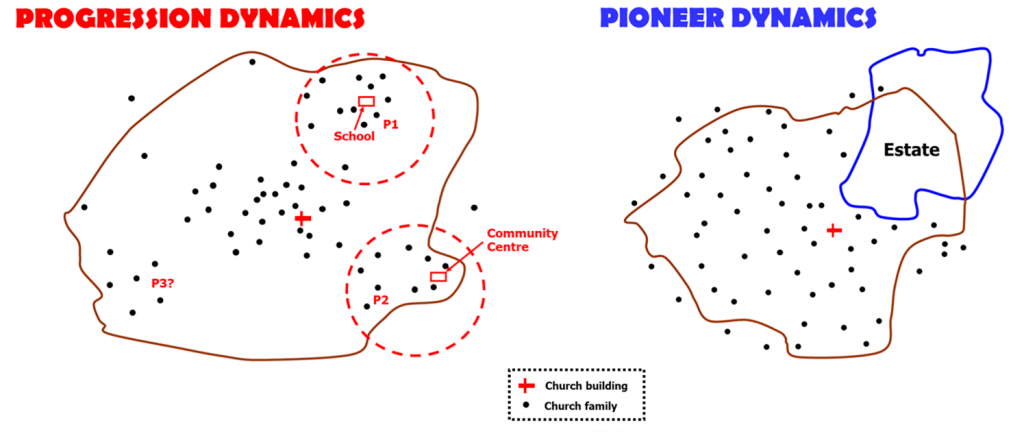Once things are going well, it can be tempting for us to just ‘settle down’, but Jesus did not think like this. He was always on the move.

The goal of the Joshua Centre is to help start 30 new congregations in 5 years, and the goal of the Diocese is to start 100 congregations in 10 years. Such goals can help focus our minds and move us into action (in the short term), but they are not usually enough to keep us moving (over the longer term). To do this, what we really need is to think more like Jesus. Two of His shortest Parables – both about the Kingdom of God – can help us with this.
‘The kingdom of heaven is like a mustard seed which a man took and planted in his field. Though it is the smallest of all seeds, yet when it grows it is the largest of garden plants and becomes a tree, so that the birds come and perch in its branches’ …[and]… ‘The kingdom of heaven is like yeast that a woman took and mixed into about sixty pounds of flour, until it worked all through the dough’ ” [Matthew 13:31-33].
Two main ideas mark Jesus’ depictions of the Kingdom of God, here: growth and impact. The measure of its growth and the extent of its impact cannot be understood as anything other than astonishingly significant. It starts small (a seed) and unimpressive (some yeast), but it does not remain thus for long. Therefore, although we should be content to start small and unimpressive, we should always expect much more to grow out of what we initially plant.

Once we have perceived that this is what the Kingdom of God is truly like, it should profoundly shape our thinking about (and planning for) the development of our congregations. We should be ready to either move on ourselves (to start a new congregation somewhere else), or we should be plotting to send out our best people (to start a new congregation somewhere else), just as biological families grow and develop by having multiple generations of offspring.
In practical terms, there are two mission dynamics which can shape what we do next. The first is a Progression Dynamic, which is when we move towards neighbourhoods or networks where we already have a good number of people – we then start from in a position of strength. The second is a Pioneer Dynamic, which is when we move towards neighbourhoods or networks where we do not have many people – we then start from a position of weakness.

Different people, and different styles of leadership, are suited to the different types of mission dynamic. Some will flourish in a progression context, and flounder in a pioneer context (and vice versa). We should be mindful of this, so that we can send out the most suitable people to take the lead on the opportunity which is presenting itself next, leaning heavily on the leadership and guidance of the Spirit. The following questions can help us with this:
- Where are the opportunities for new congregations?
- What type of opportunities are they (“Pioneer” or “Progression”)?
- Who has the potential to lead this particular type of mission?
- Who is praying about this already, and has the passion to do it?
- What are the next steps, for everyone who might be involved?
‘Jesus said: “I must proclaim the good news of the kingdom of God to the other towns also, because that is why I was sent” [Luke 4.43]. If we want to follow Him, and end up becoming more and more like Him, we are going to have to avoid just ‘settling down’ in our leadership. We are going to have to go for multiplication of our congregations,. We are going to have to keep on moving.
This blog contains the fifteenth principle taught to congregation leaders in the Joshua Centre’s Leadership Development Program (within the theme: ‘Lead A Movement’).
